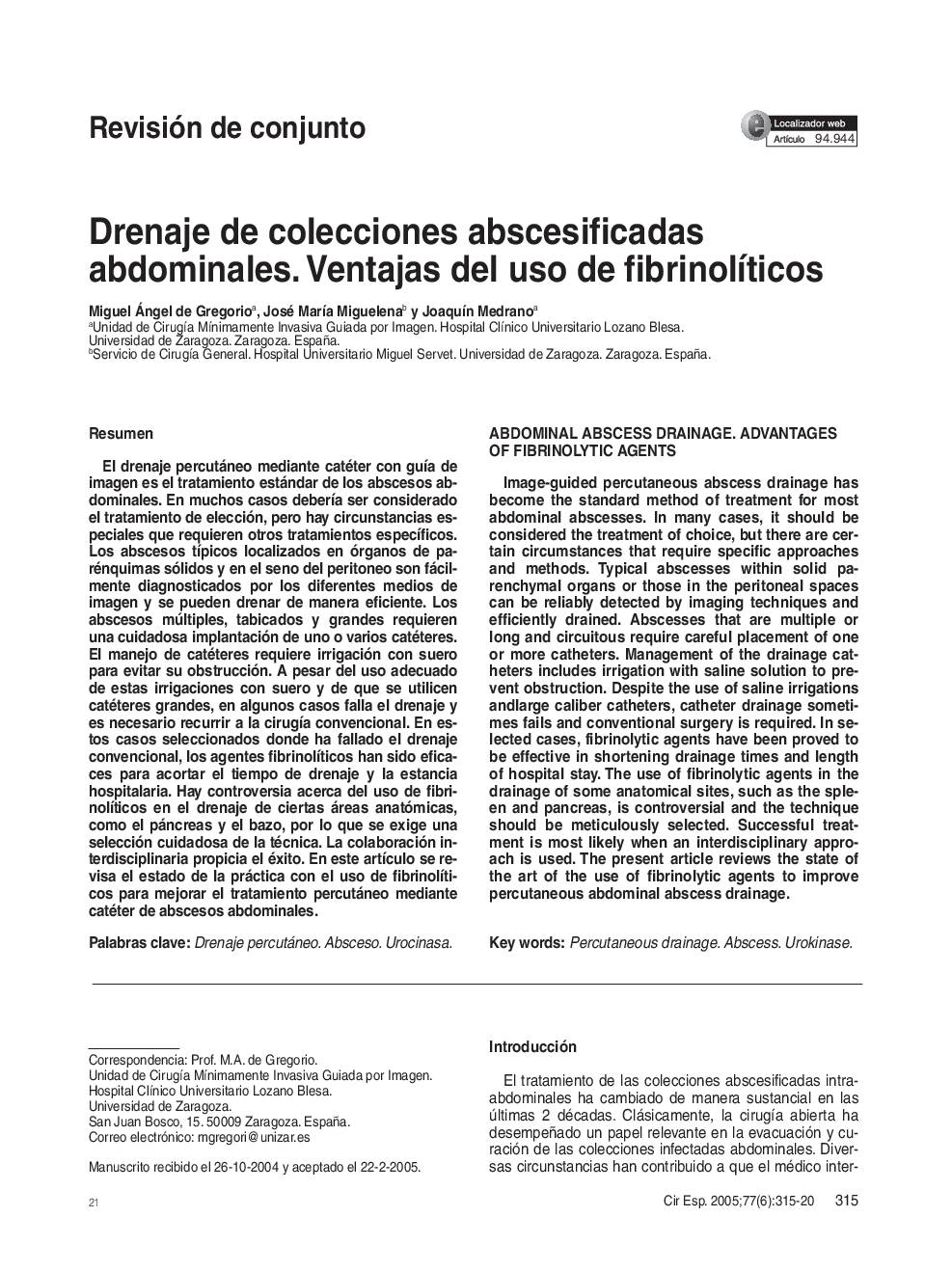| Article ID | Journal | Published Year | Pages | File Type |
|---|---|---|---|---|
| 9394531 | Cirugía Española | 2005 | 6 Pages |
Abstract
Image-guided percutaneous abscess drainage has become the standard method of treatment for most abdominal abscesses. In many cases, it should be considered the treatment of choice, but there are certain circumstances that require specific approaches and methods. Typical abscesses within solid parenchymal organs or those in the peritoneal spaces can be reliably detected by imaging techniques and efficiently drained. Abscesses that are multiple or long and circuitous require careful placement of one or more catheters. Management of the drainage catheters includes irrigation with saline solution to prevent obstruction. Despite the use of saline irrigations andlarge caliber catheters, catheter drainage sometimes fails and conventional surgery is required. In selected cases, fibrinolytic agents have been proved to be effective in shortening drainage times and length of hospital stay. The use of fibrinolytic agents in the drainage of some anatomical sites, such as the spleen and pancreas, is controversial and the technique should be meticulously selected. Successful treatment is most likely when an interdisciplinary approach is used. The present article reviews the state of the art of the use of fibrinolytic agents to improve percutaneous abdominal abscess drainage.
Related Topics
Health Sciences
Medicine and Dentistry
Surgery
Authors
Miguel Ángel de Gregorio, José MarÃa Miguelena, JoaquÃn Medrano,
